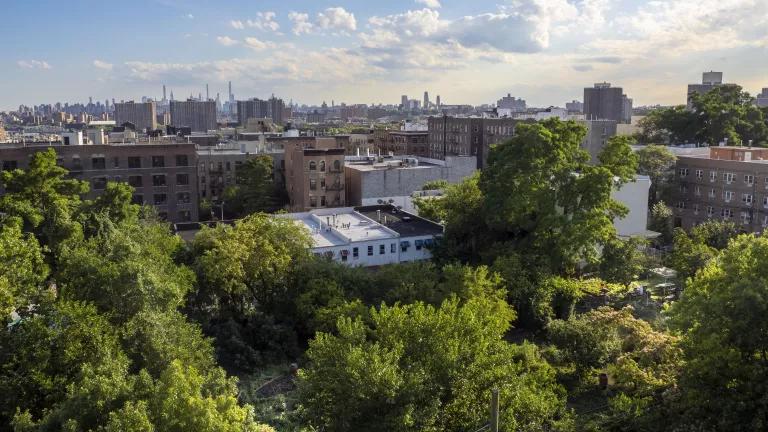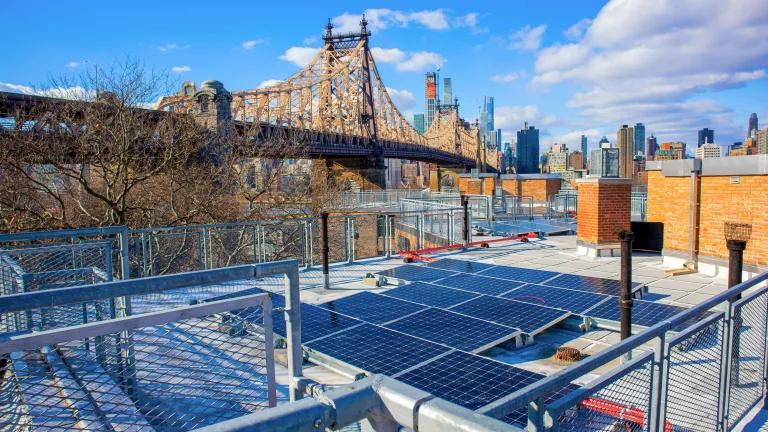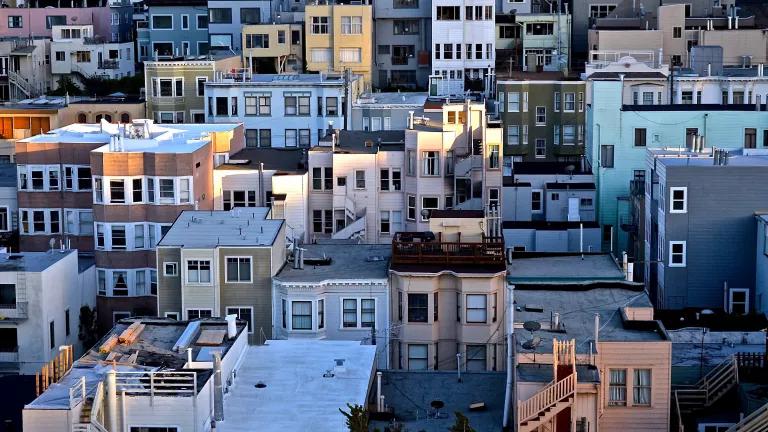We Need an Equitable Energy Efficiency Focus in New York
A robust and sustainable program would increase energy affordability, improve public health, and create jobs for all New Yorkers including environmental and climate justice communities and low and moderate income households.

Setting strong utility electric energy efficiency targets will save energy and prevent large amounts of pollution
This blog was co-authored with Stephan Roundtree, Jr., Environmental Policy and Advocacy Coordinator at WE ACT for Environmental Justice
By Earth Day, April 22 (only 9 days away), Gov. Cuomo will be releasing a “comprehensive and far- reaching energy efficiency initiative.” Energy efficiency has many benefits, including saving customers billions of dollars and putting New York on track to meet its leading climate and clean energy goals. But an equitable and effective energy efficiency framework should also ensure that these benefits reach traditionally underserved markets. A robust and sustainable program would increase energy affordability, improve public health, and create jobs for all New Yorkers, including environmental and climate justice communities (who are disproportionately burdened by the effects of pollution) and low- and moderate-income households.
WE ACT for Environmental Justice is already working with co-op buildings housing low-income residents – most of whom are people of color-- to overcome barriers to energy efficiency retrofits and rooftop solar generation while fostering a greater awareness of energy efficient behavior and increased civic engagement. WE ACT is also working with Northern Manhattan stakeholders and the New York State Energy Research and Development Authority (NYSERDA) to develop a comprehensive community energy plan. These efforts underscore both the willingness of marginalized communities to advocate for themselves, and the imperative for further energy efficiency investment where it’s needed most.
Making energy efficiency accessible in affordable multifamily housing
In New York, there are approximately 1.7 million units of affordable housing units, accounting for 21 percent of the Empire State’s housing stock. Governor Cuomo has an excellent opportunity to remove barriers that affordable multifamily housing owners have traditionally faced in implementing energy efficiency projects and make sure that the benefits of energy efficiency are extended to residents. As stated in recent comments by the Energy Efficiency for All coalition, these barriers include limited access to capital, lack of capacity and technical support, and difficulty in navigating existing funds and grants. Gov. Cuomo should recommend a plan to address these issues.
The governor’s energy efficiency program would be building upon the programs offered by NYSERDA (New York State Energy Research and Development Authority), the New York Green Bank, and utility companies to procure energy efficiency and provide technical and financial support in a way that addresses the challenges that building owners face in financing and executing energy efficiency projects. For instance, this energy efficiency framework would improve building energy performance requirements in a manner that helps meet climate goals without sacrificing energy affordability.
Reducing public health disparities
Due to human-caused climate change, New York City is increasingly vulnerable to climate-related weather events like extreme summer heat. In fact, by mid-century, New York City is expected to experience a significant increase in heatwaves and multiple days a year over 100 degrees Fahrenheit. Bolstering energy efficiency through measures such as weatherization which can improve the health of residents of multifamily affordable housing in the face of these increasing challenges.
The “non-energy” benefits of greater efficiency include improved air quality, decreased humidity that will reduce mold, and reduced dependency on expensive in-unit air conditioners. Critically, Black and Latinx households, along with low-income households of any race, already pay on average more than three times the cost for energy compared with higher- income households. Energy-saving programs that are required to serve these traditionally overburdened communities can help offset the effects of past disinvestment and reduce the effects of climate disruption.
A recent report by the American Council for an Energy-Efficient Economy modeled the health impacts that would result from all 50 states and the biggest 50 cities in the U.S. reducing their annual electricity consumption by 15 percent. The study suggested that energy efficiency’s health benefits would be higher for New York City than for any other city (as measured by avoided healthcare costs) and that the avoided costs for New York would be the second-highest among the states.
In addition to reducing electricity use, an important component of a successful energy efficiency program is continuing to incentivize cleaner, renewable technologies such as heat pumps that would reduce the need to burn fossil fuels on-site for end-uses such as heating and cooling. This would reduce the need to rely on fossil fuel peaker plants which release harmful pollutants that contribute to asthma and other serious health problems.
Creating clean energy jobs
Energy efficiency is already the leading source of clean energy jobs in New York State. An ambitious energy-saving initiative could create thousands more, particularly in vulnerable communities that suffer from both the highest energy burdens and the highest rates of joblessness. In 2016, 110,582 New Yorkers worked in the energy efficiency industry compared to 4,066 jobs in the natural gas sectors and 711 jobs in oil or other fossil fuel related jobs. Greater investment in energy efficiency can create good, family-sustaining, jobs across income levels and geographies within New York.
Environmental and climate justice groups across the state have already voiced their priorities for a truly equitable and progressive policy in a letter to the Governor. Looking forward to Earth Day, we again urge Governor Cuomo to further energy affordability and ensure that all New Yorkers (especially low and moderate-income customers) will reap the many benefits that energy efficiency offers in creating healthier and more climate-resilient communities.



